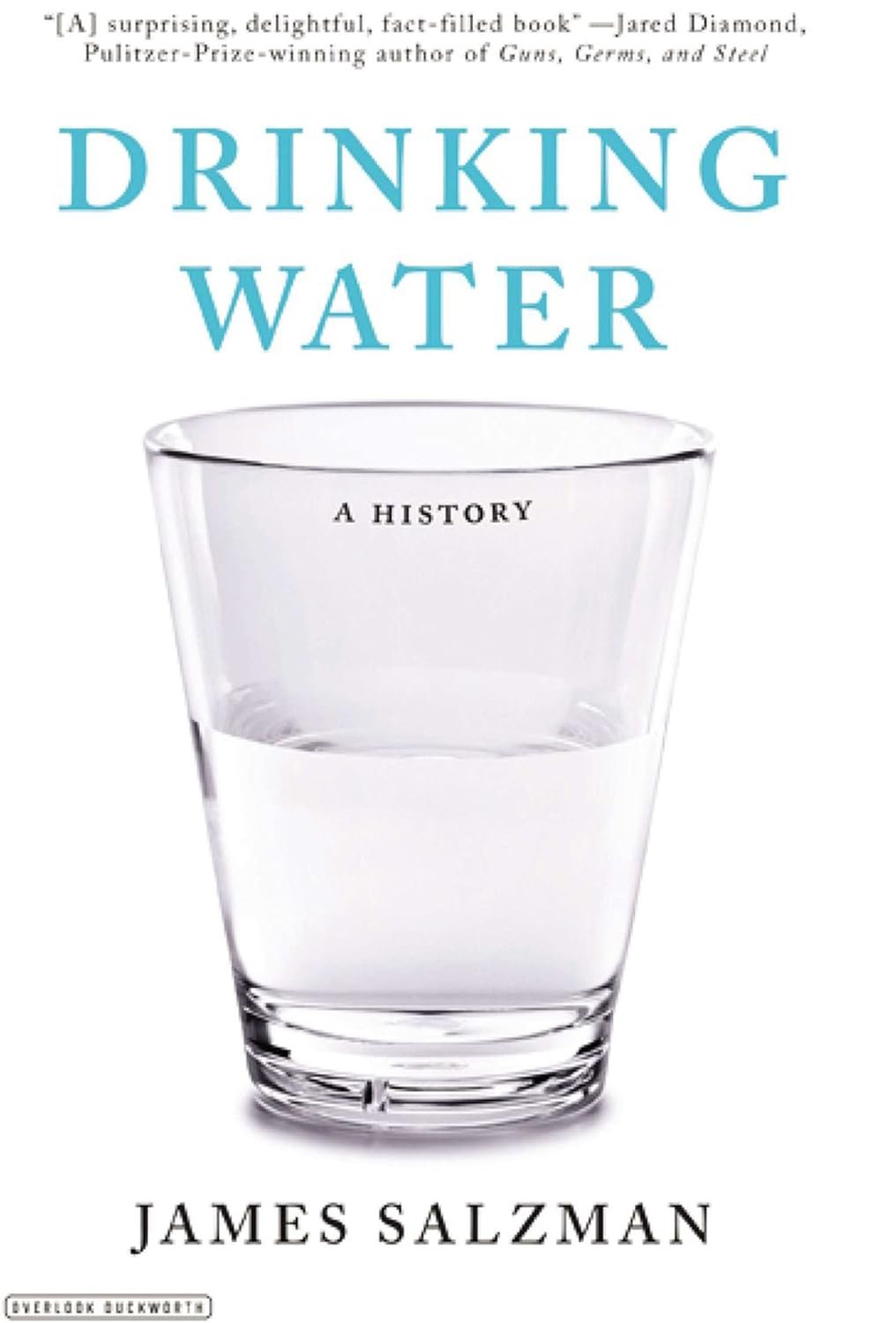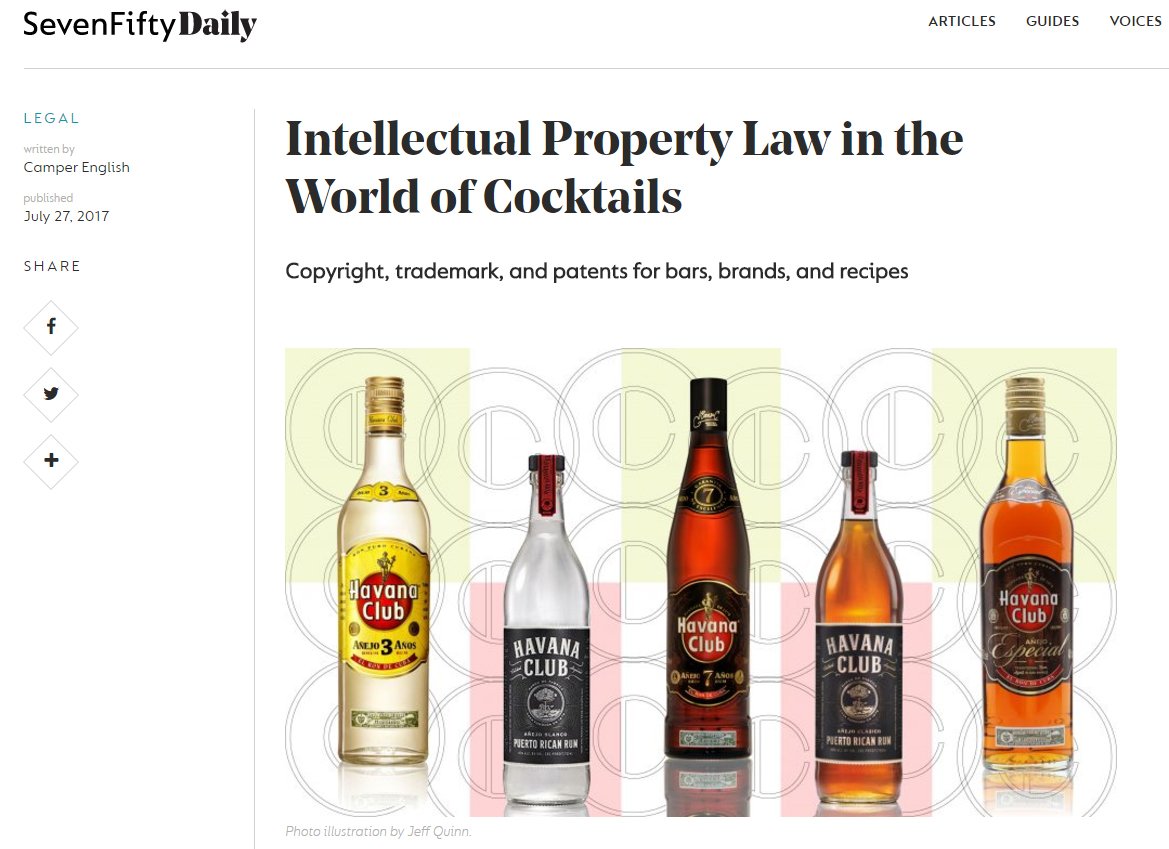I recently read the 2012 book Drinking Water: A History by James Salzman, in preparation for my forthcoming water classes I'm teaching in San Francisco.
It is about the history of public and private drinking water and bottled water, from olden times until recent times. From researching Doctors and Distillers I already knew a lot of information in this book, but it deepened my understanding of some things.
Here are some facts I picked up.
Roman Lead Poisoning
You know how people theorize lead poisoning might have killed off the Roman Empire? Well if so, the lead likely didn't come from the lead pipes, even though those were used to carry water- in part because they became calcified and the water wouldn't touch the lead. But they did boil fermented grape juice into a syrup called sapa for sweetening foods and beverages, since they didn't have sugar yet. The boiling was often done in lead pots, and it was this source of lead poisoning that could have led to problems.
p. 71
Montezuma's Revenge
Traveller's belly was known by different names in different parts of the world. Montezuma's Revenge, Delhi Belly, Mummy Tummy (Egypt), and Karachi Crouch (Pakistan). It's not neccesarily that the water is so bad, it's that you're not used to it.
p. 76
Chlorinated Water
Chlorinated Water dates to 1902 – the first municipality to use it was Middelkerke, Belgium. In 1908 Jersey City became the first city in the US to do so for an entire city.
Drinking Fountains
Public drinking fountains were often sponsored as charity works by pro-Temperance groups, both in England in the 1800s and in the US leading up to Prohibition. They were provided as free alternate sources to beer, which was the more common form of hydration before modern sanitation. Still, many public drinking fountains had a community cup chained to them for drinking! A lot of people got sick from the cups. The modern "bubbler" with water that shoots out so that you don't need a cup was an answer to the communal cup.
Some early drinking fountains in the US had space to add 20 pound blocks of ice to chill the water.
Branded Water
The first branded bottled waters were from holy wells during the era of European religious pilgrimages and visits to holy sights and relics. One could purchase flasks that were branded with the source. Later on, healing mineral waters became the branded bottled waters.
p 168
Modern Bottled Water Brand Dates
Poland Spring 1845
Vittel 1855
Perrier 1863
Deer Park 1873
Arrowhead 1894
p 171
Bottled Tap Water
For Dasani and Aquafina, "Coke and Pepsi take tap water; run it through a series of fine filters to remover minerals and bacteria, ultraviolet and ozonation treatments to kill any remaining organisms, and reverse osmosis to remove any remaining materials; and then add minerals back in because all the taste has been removed."
p 178
US FDA Regulated Terminology
I don't think I knew that certain terms on bottled water bottles are regulated. I verified on the FDA website:
The agency classifies some bottled water by its origin. Here are four of those classifications:
- Artesian well water. This water is collected from a well that taps an aquifer—layers of porous rock, sand, and earth that contain water—which is under pressure from surrounding upper layers of rock or clay. When tapped, the pressure in the aquifer, commonly called artesian pressure, pushes the water above the level of the aquifer, sometimes to the surface. Other means may be used to help bring the water to the surface.
- Mineral water. This water comes from an underground source and contains at least 250 parts per million total dissolved solids. Minerals and trace elements must come from the source of the underground water. They cannot be added later.
- Spring water. Derived from an underground formation from which water flows naturally to the surface, this water must be collected only at the spring or through a borehole that taps the underground formation feeding the spring. If some external force is used to collect the water through a borehole, the water must have the same composition and quality as the water that naturally flows to the surface.
- Well water. This is water from a hole bored or drilled into the ground, which taps into an aquifer.
Monitoring Water
“One thing is certain: Bottled water is less stringently regulated than tap water.” Bottled water isn't necessarily more "pure" or safe than tap water. It certainly can be though.
p 183

